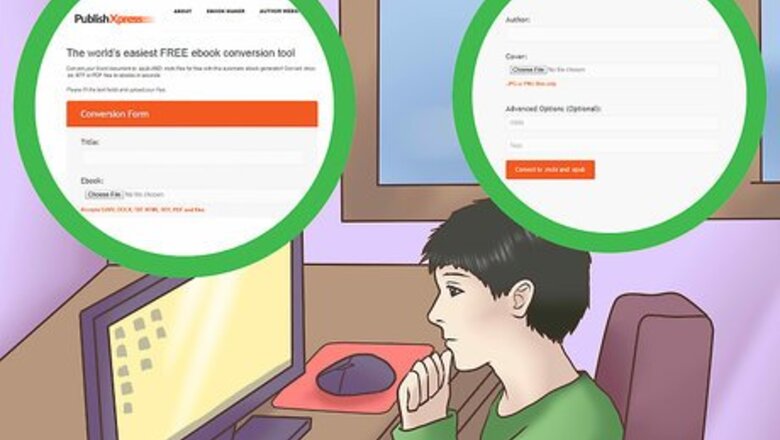
views
- Design an attractive and eye-catching cover for your ebook. Then, price your work competitively, which is around $0.99 to $9.99.
- Sell your book on a platform like Amazon’s Kindle Store or Barnes & Noble eBookstore for greater exposure.
- Market your ebook by posting about its release and discussing what it’s about on social media. Or, share copies with influencers and ask for their reviews.
Preparing Your eBook to Sell
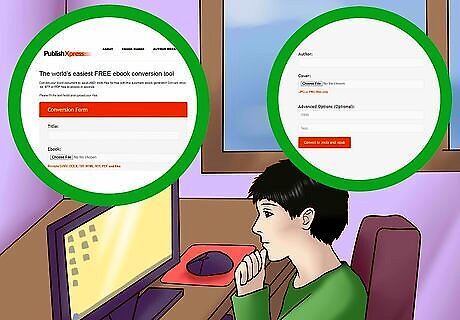
Format your ebook for online publication. If you wrote your book using word processing software, you’ll have to convert it into ebook formats. First, convert your document into a PDF. You can sell your book in PDF format, but you’ll have more options if you convert your PDF into MOBI and EPUB formats as well. Accomplish this for free using online conversion tools. Convert your PDF into MOBI and EPUB files with this tool: http://www.publishxpress.com. Use free software such as Calibre or Zinepal if you want to modify your book in its new format before publishing. Purchase programs like Scrivener for $45 (USD) or Pressbooks for $99 (USD) if you want access to advanced formatting features.

Optimize the front matter of your ebook for previews. On most ebook platforms, the seller will allow potential customers to preview or even download the first 10% of your ebook for free. Estimate which pages will be included in this preview and maximize their content, so people will want to read the rest of your book! If you have a very long table of contents, consider shortening it. Try to include a sizable portion of your introduction or the first chapter in the preview. If possible, leave the reader with a cliffhanger at the end of the preview!

Design an eye-catching cover for your ebook. Contrary to common wisdom, most people will judge your book by its cover. So make sure it stands out with high-quality images and easy-to-read text. Make a cover yourself with free software like Canva Free Online Book Cover Maker or Adobe Spark’s Book Cover Maker. Or, you can hire a freelance artist who specializes in ebook cover design at websites like Fiverr, oDesk, or 99designs.

Price your ebook competitively. The vast majority of self-published ebooks sell for $0.99-$9.99 (USD). Search ebook stores to see how self-published ebooks that are similar to your own are priced. Match these prices, or if you are just starting out, consider offering your book for a lower price until you grow your readership. Authors who are just starting out often price their ebook between $0.99-$2.99 (USD). Some new authors even offer their book for free and then raise the price at a later date. More established, self-published authors can raise the price of fiction novels up to $9.99 (USD). Very popular nonfiction books can sell at higher rates but rarely exceed $59 (USD).
Deciding Where to Sell Your eBook
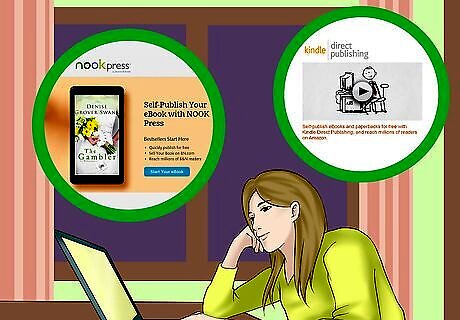
Gain exposure on the largest retail sites. The vast majority of ebooks are sold on third-party retail websites—like Amazon’s Kindle Store and the Barnes & Noble eBookstore. Consider opening a free account on one or both of these platforms to maximize exposure for your ebook. Amazon’s Kindle Direct Publishing (KDP) offers resources to help you publish in MOBI with them. Once published, your ebook will become available to the public within 24-48 hours. KDP keeps a percentage of your royalties, usually 30% of each book sold: https://kdp.amazon.com/en_US Barnes & Noble’s Nook Press offers similar resources and a similar payment process. But Nook books use the EPUB format and are only available to readers in the UK and US. Only publish on the Kindle Store if your audience is outside the UK and US. To ensure the widest possible US and UK readership, publish on both platforms.

Maximize sales by selling your book with smaller retailers. There’s a growing number of online ebook retailers. Unlike with traditional publishing houses, you can feel free to sell with as many retailers as you want. Consider selling with: Apple, Sony, Kobo, OverDrive, and Scribd. All of these retailers use EPUB formats with the exception Apple’s iBooks, which uses a modified software that you can convert to for free: https://www.apple.com/ibooks-author/. If you’re worried about coordinating sales over multiple retail sites, you can pay to use an ebook distributing service such as Draft2Digital or Smashwords. These services publish on multiple sites for you and disburse your royalties, but they collect an additional 10% of your profit.
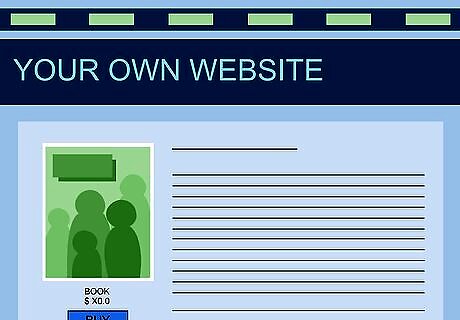
Sell directly on your own website. If you don’t already have one, create your own website, so you can sell directly to customers. Your website won't be the only way that you sell your ebook, but it's a wonderful way to make it available to fans who want to buy directly from you, and you can use it as a platform to connect with readers. Set up a payment system for your website by exploring merchant services on platforms like PayPal, WePay, or Payoneer. You can purchase services such as Gumroad and Selz that will help you create and manage your own ebook sales store. Create a feature on your website to collect email addresses from your guests. Make sure that you include the link to your website in the front matter of your ebook, so anyone who previews your book on a retail site can find your personal website.
Marketing Your eBook

Survey existing fans to learn about your target market. You may already have a sense of who you’re writing for—young adults, hiking enthusiasts, or thrill seekers. But you can always learn more about them and how to connect with them over social media. If you have followers on a social media site or have generated an email list from website visitors, conduct an online survey or email individual fans to learn more about them. Ask them which social media sites they use on a regular basis and what kinds of magazines, blogs, or message boards they visit. This information will help you reach existing fans as well as attract new readers with similar interests.

Enhance your online presence by creating or updating online profiles. Create or update profiles on sites that promote authors such as GoodReads and Amazon Author Central. Start a blog to discuss topics relating to your ebook and update it at least every other week. Update or create profiles on as many social media sites as you can effectively manage. Consider becoming active or increasing your activity on: Pinterest, Instagram, Twitter, Facebook, LinkedIn, Quora, as well as Meetups groups and other online groups related to your fans’ interests.

Use social media to grow interest in your topic. Authors who market their work are most effective when they do so indirectly. You don’t want to simply announce that your book is on sale for $2.99 (USD). Instead, increase interest in your subject matter by promoting your topic and expertise over as many online platforms as possible. Answer questions on sites like Quora to demonstrate your expertise. Link to your website whenever you offer advice on message boards. This strategy works especially well if you write nonfiction. Post links on social media to news stories that pertain to your topic. If you write about technology, post an article about a new product. Even if you write fiction, post stories about real individuals who face similar issues as your characters.

Encourage people to review your book. Share copies of the book with bloggers who write about similar topics. If you’re very early in your career, you can even contact local book clubs and offer to attend a meeting, so members can talk with the author. If it goes well, tell everyone who read your book that they can leave a review on whichever websites sell your book. Develop a relationship with a blogger by offering to review their work, co-writing a post, or even getting lunch or coffee if you live in the same area. When you share your work with bloggers, just say that you’d love to hear their feedback and send them links they can follow to review your ebook. If you attend a book club, have cards made out with your name. On the back write, “Loved my book?” And list websites where they can leave reviews.

Grow your fan base with interactive giveaways and contests. Social media offers amazing opportunities to interact with readers. Authors can post contests for fans--such as drawing a picture of their favorite character or dressing up like a character and posting the picture to social media. Then you can award a prize to the winner. Alternatively, consider giveaways where fans who post on your site or share one of your posts are chosen at random to receive a prize. Give away gift cards for more ebooks, a new ebook reader, or ebook reading accessories. To build credibility offer your ebook as a free gift. Or give away prizes that relate to your topic and will appeal to your fan base. You can survey a few superfans ahead of time to find out which prizes they prefer.
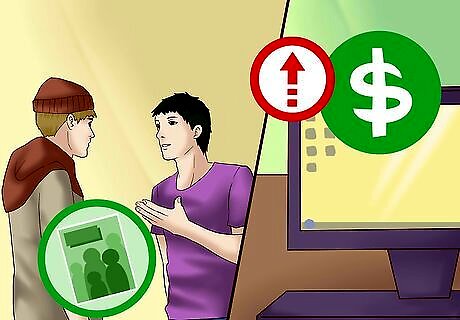
Adapt your ebook and marketing strategies as you learn more. With an ebook, your ideas are never written in stone. If it’s not selling initially, you can talk to readers to learn why and make revisions. There’s nothing wrong with releasing a new edition. Similarly, try new marketing strategies or adapt existing ones to maximize sales.










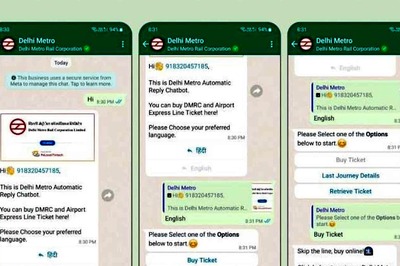








Comments
0 comment